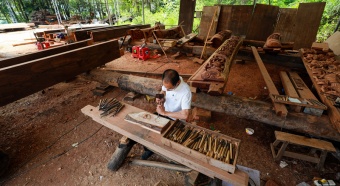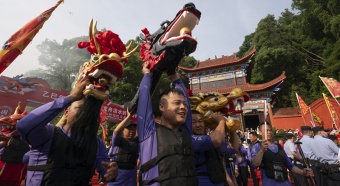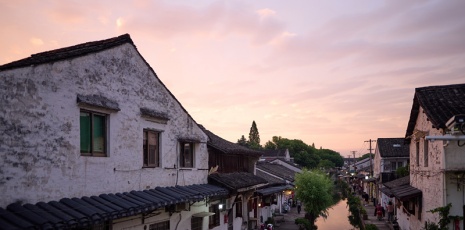
Chinese laborers grind a runway by dragging stone-rollers on towropes. [Photo exclusively provided to chinadaily.com.cn]
The Chinese people built and maintained dozens of airports during World War II, providing for a massive airlift of fuel and supplies for Allied forces and serving as a crucial base to oppose Japanese aerial bombardments in the Asia-Pacific region.
The government mobilized vast numbers of civilians and material resources, spending big to build air force bases across southern and southwestern China, including Chengdu in Sichuan province, Kunming in Yunnan province, and Liuzhou and Guilin in the Guangxi Zhuang autonomous region.
Sichuan's civilians incurred heavy losses and casualties in building the airfields as they were created through manpower with simple and crude tools such as stone-rollers, shoulder poles and towropes. Many workers were crushed to death when grinding the airfield runway.
From summer 1944 to August 15, 1945, there were 33 military airfields in the southwestern province of Sichuan, one of the main battlefields in China, including four berthing bomber aircrafts and five for fighter jets circling the Chengdu Plain. They served as the strategic air force base for Allied forces in the Chinese mainland.
During the later period of WWII, the US Air Force mobilized 52,000 fighter-bombers and most planes took off from the manpower-built airfields, conducting successful strategic bombing, targeting several Japanese cities.
The photo is exclusively provided to chinadaily.com.cn by the Museum of the War of Chinese People's Resistance against Japanese Aggression and cannot be used without permission.
Stone rollers tell story of sacrifice
In I943, the Allies decided to deploy B-29 bombers in India that would refuel near Chengdu before bombing targets on the Japanese mainland.
To implement the plan, the Nationalist government mobilized 500,000 people near Chengdu to build four military air bases in Xinjin, Qionglai, Guanghan and Pengshan counties from late 1943 to May 1944. More









